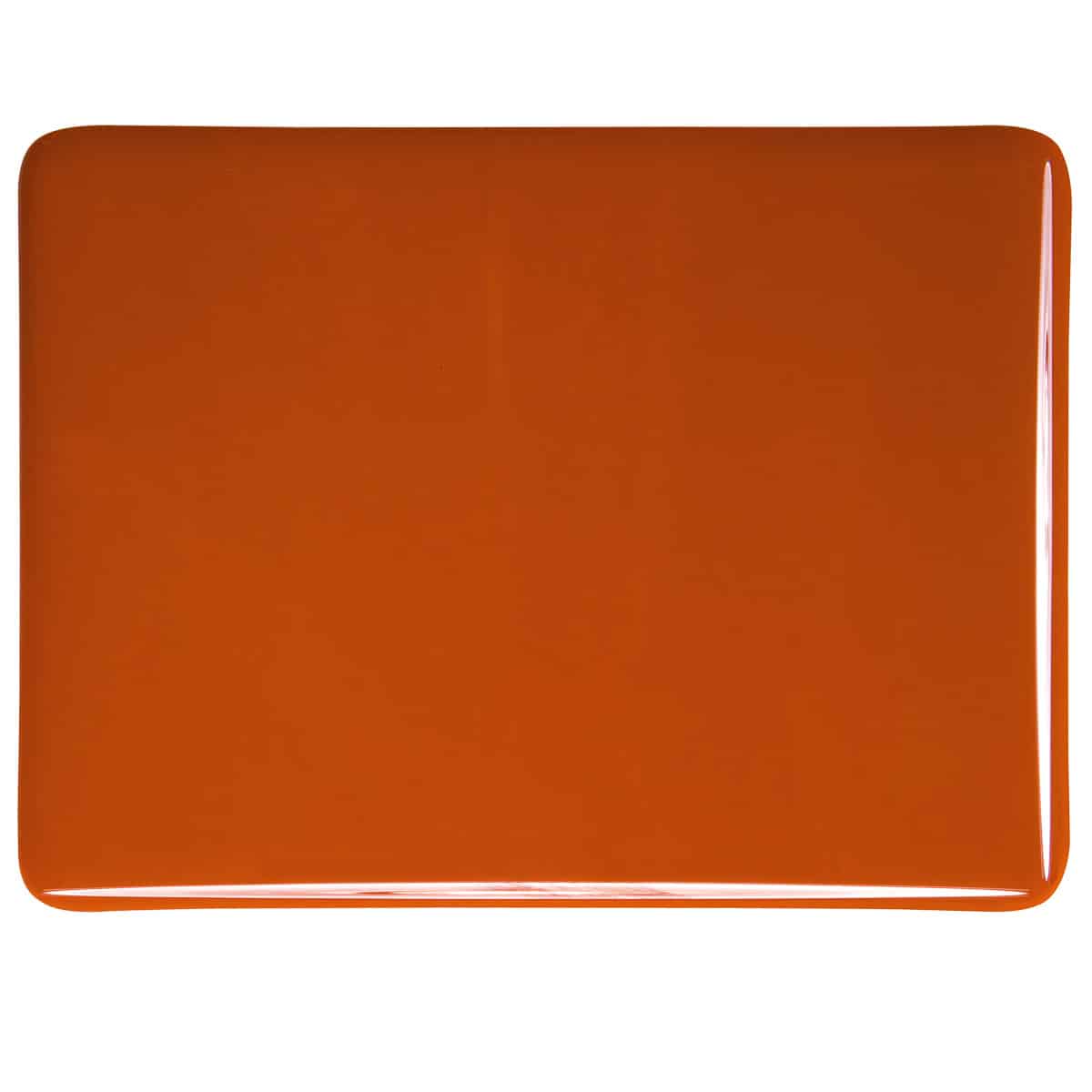Overview

Striker
This style may not reveal (strike to) its target color until fired.
Reactive Potential
Contains: Sulfur (S) / Selenium (Se)
May React With: Copper (Cu), Lead (Pb), and Silver (Ag)
Forms of Glass
Sheet Glass (-0030, -0050), Frit (-0001, -0002, -0003, -0008) Rod (-0576) and Stringer (-0107)
Detailed Information
About 000329 Sheet Glass
Cold Characteristics
Opalescent. Slight small mottle and orange-peel texture.
Working Notes
At full fuse and capped with clear glass, the mottling may remain but become faint in transmitted light. Lighter wisps may appear in reflected light. When uncapped, the mottling tends to even out and the color becomes more consistent and even.
This style is not suitable for kilncasting because it can become incompatible when held at high temperatures for an extended period. It may also become incompatible in instances where processes exceed the parameters of the test for compatibility. Testing recommended when heatwork exceeds these parameters.
About 000329 Frit
Working Notes
This style is not suitable for kilncasting because it can become incompatible when held at high temperatures for an extended period. It may also become incompatible in instances where processes exceed the parameters of the test for compatibility. Testing recommended when heatwork exceeds these parameters.
About 000329 Rod
Cold Characteristics
Opaque.
Working Notes
This style is not suitable for kilncasting because it can become incompatible when held at high temperatures for an extended period. It may also become incompatible in instances where processes exceed the parameters of the test for compatibility. Testing recommended when heatwork exceeds these parameters.
Torch: A range of color can be achieved by variations in heatwork within a single piece.
Kiln: Lighter color and greater opacity than in sheet glass form. Slight variation in color with different production runs.
Other: Flameworked color is a shade darker than the cold rod.
Stringer
Working Notes
This style is not suitable for kilncasting because it can become incompatible when held at high temperatures for an extended period. It may also become incompatible in instances where processes exceed the parameters of the test for compatibility. Testing recommended when heatwork exceeds these parameters.

